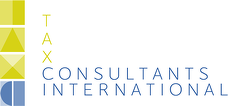For corporation the most important changes per 1 January 2010 are the ones relating to
1 Participation exemption
Under the 2009 law the participation exemption did not apply to "low-taxed investment participations", which were defined as participations which own more than 50% portfolio investments and which are not taxed in their state of residence at a rate of at least 10%, calculated according to Dutch tax standards.
Under the 2010 law, the aforementioned condition is abolished and replaced by the general requirement that the participation may not be held as a portfolio investment. The motive of the tax payer becomes a relevant, although arbitrary factor. However, the law offers two escapes; if an investment is a portfolio investment, the participation exemption still applies if either an “asset test” or a “subject-to-tax test” is met.
With regard to the asset test: the asset test was also contained in the 2009 legislation but it has been relaxed. Under the 2009 legislation, the assets of the participation should not consist for more than 50% of “low-taxed portfolio investments”, whereby the assets of more that 5% subsidiaries had to be taken into account on a consolidate basis. Under the 2010 legislation, consolidation is only required if a particular subsidiary’s assets consist for 30% or more out of low-taxed portfolio investments.
With regard to the subject-to-tax test: under the 2009 regulations a full recalculation of the subsidiary’s taxable profits on the basis of Dutch tax standards was required to determine whether or not the effective tax rate was higher than 10%. The 2010 regulations no longer require “10% calculated according to Dutch standards” but instead they require a "sufficient rate". A “sufficient“ rate is defined as a regular statutory tax rate of at least 10% unless the taxable base differs significantly from the tax base according to Dutch standards, which could for instance be the case when a special tax regime applies to the subsidiary.
2 Loss carry back
Under the 2009 tax regulations, the period for carry back of losses was limited to one year. As an anti-crisis measure, a 3-year carry back with respect to losses incurred in 2009 an 2010 is allowed.
3 Innovation box
The patent box has been introduced on 1 January 2007 in order to make The Netherlands more attractive for the location of Research and Development activities. In general the patent box regime provided that revenues from self developed intellectual property rights were effectively taxed at a rate of 10%. There were some constraints to the use of the patent box:
- the revenues which could be taxed in the patent box should not exceed four times the development costs of the intellectual property rights and the minimum revenue that could be taxed should not be less than the actual development costs of the immaterial assets.
- losses could only be offset for 10% against taxable profits, although as a crisis measure losses could be offset for the full 100% against taxable profits in 2009 and 2010.
As per 1 January 2010 the scope of the patent box regime has been extended and the conditions have been relaxed. The patent box has been renamed into innovative box and the regime has been changed on the following points:
R & D Activities
Originally the patent box regime could only be applied to income from registered patents, but has now been extended to include income from qualifying R & D projects.
Maximum of revenues
The maximum threshold, which was four times the development costs, has been deleted.
Tax rate
The effective tax rate will decreases from 10% to 5%.
Tax losses
Losses incurred can be offset fully against taxable profits in any year. This means that the normal loss compensation regime is applicable.
4 EU tax admittance for residents of Norway and Iceland (EEA countries)
Following two decisions of the European Court of Justice (Case C-521/07 and Case C-303/07), The Netherlands has extended its tax exemption for tax payers in EU countries to tax payers in the European Economic Area, specifically Iceland and Norway. This implies that tax payers in Iceland and Norway can now also benefit from the 0% percent withholding tax rate for dividends, but also other tax facilities for EU citizens (such as the exemption for qualifying mergers and spin offs).
Although Liechtenstein is a member of the EEA, it is explicitly not included in the new legislation. Because Liechtenstein has in the meantime signed a treaty for the exchange of information with The Netherlands, it is expected that Liechtenstein will be allowed access to EU tax benefits shortly.
5 Dividend withholding tax exemption for EU and EEA shareholders
Under the 2009 regulations, the exemption from dividend withholding tax for EU corporate shareholders contained two conditions based on the Parent-Subsidiary Directive: the parent company should have a qualifying legal form of an EU country and the parent should be subject to a qualifying profit tax in the EU. Both conditions are abolished, although the parent company is not allowed to be an effectively tax exempt investment fund and it must be entitled to treaty benefits if a Dutch tax treaty applies (which implies amongst others that it must be subject to tax in its country of residence).


.png)